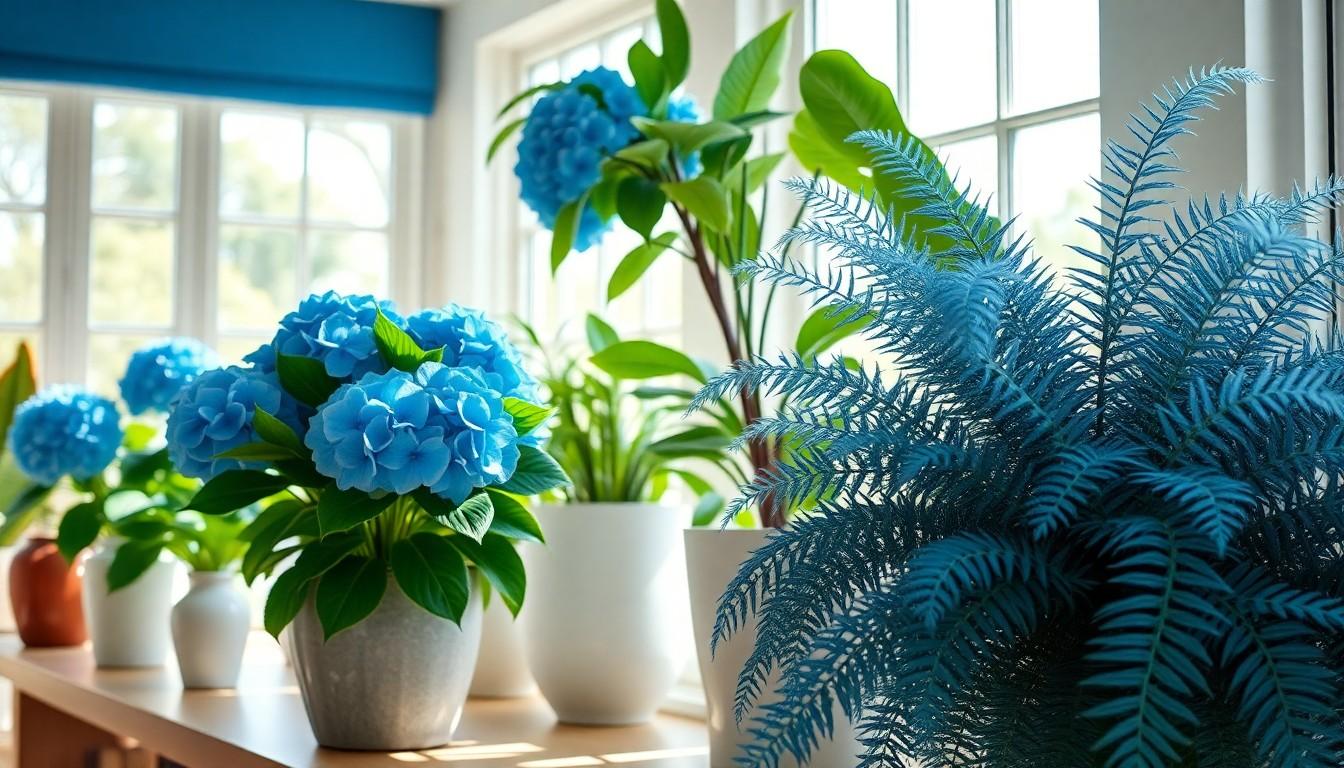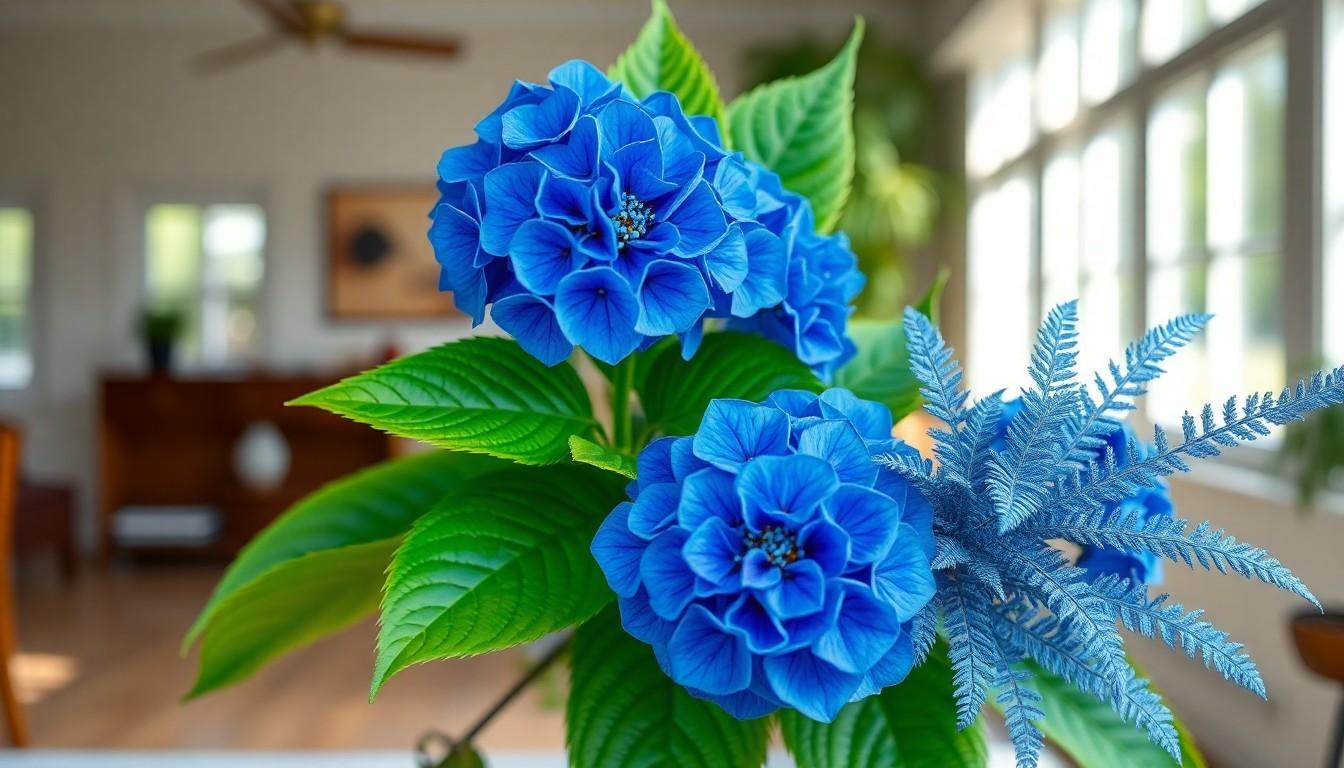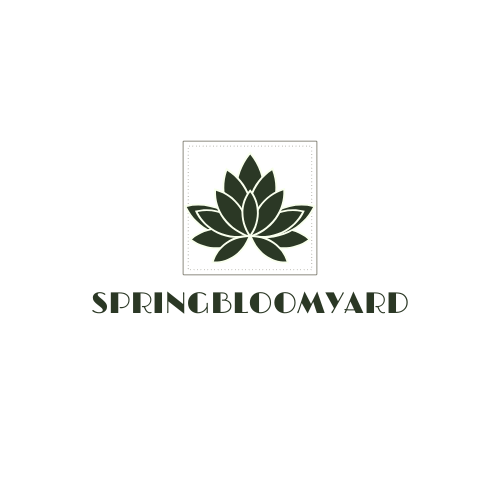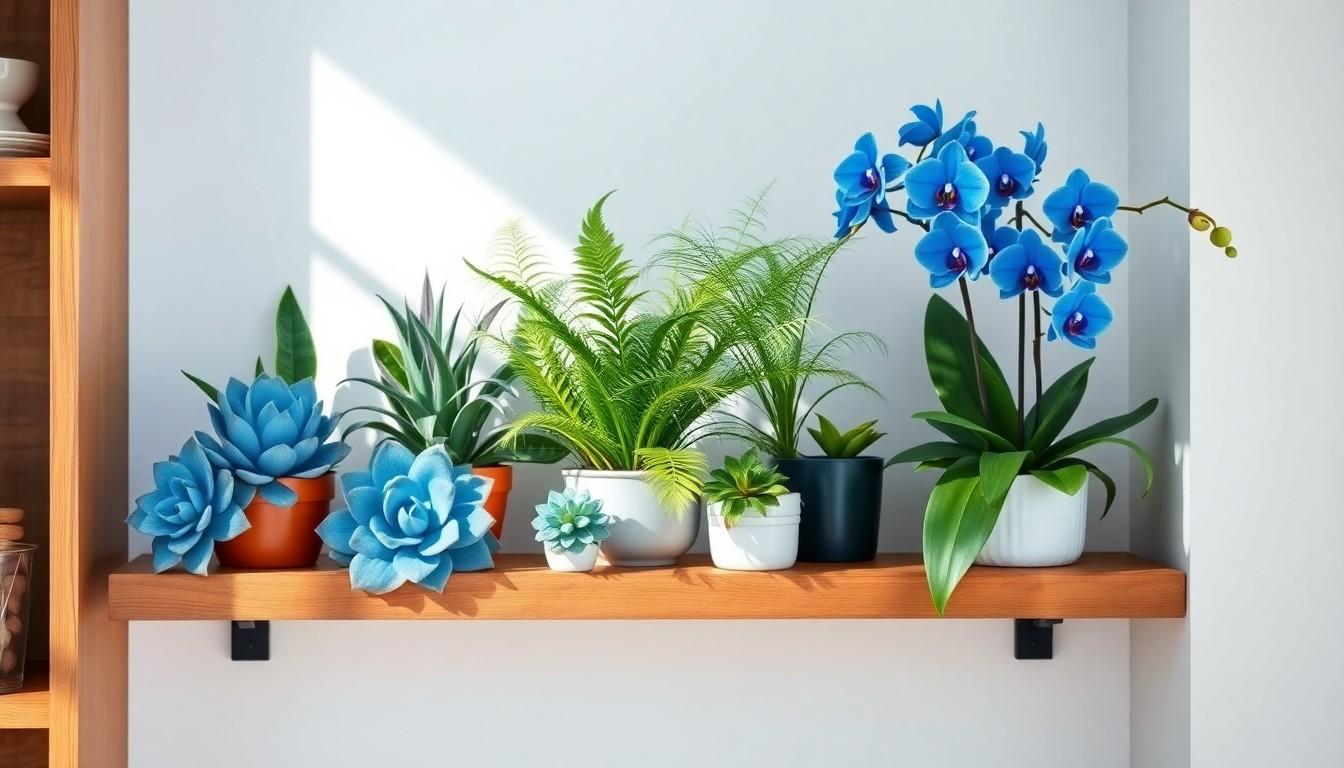Imagine walking into a room and being greeted by a splash of blue amidst the greenery. Blue house plants aren’t just a rarity; they’re a conversation starter and a mood lifter. These vibrant beauties can transform any dull corner into a stunning oasis, making your friends wonder if you’ve secretly become a plant whisperer.
Benefits of Blue House Plants
Blue house plants offer several advantages that go beyond their aesthetic appeal. Their unique colors can transform any living area into a vibrant retreat.
Enhancing Home Aesthetics
Visual interest increases with blue house plants. They provide a striking contrast against green foliage, making spaces feel more dynamic. Incorporating these plants into decor can complement various design styles, from modern to eclectic. A blue plant like the Blue Star Aloe can serve as a stunning focal point on a shelf or table. Designers often recommend mixing different species for a diverse, textured look.
Improving Air Quality
Air quality benefits significantly from blue house plants. Many species filter pollutants, contributing to a healthier indoor environment. For instance, plants like the Blue Pothos effectively remove toxins such as formaldehyde. Increased oxygen levels can enhance overall well-being, leading to improved focus and mood. Indoor plants not only purify air but also provide humidity, promoting respiratory health. Therefore, adding blue plants to spaces can create a refreshing atmosphere.
Popular Types of Blue House Plants

Several types of blue house plants stand out for their beauty and interior benefits. Each type provides unique characteristics that enhance indoor spaces.
Blue Hydrangea
Blue hydrangeas are known for their striking blue blooms, which can be a stunning addition to any home. These plants thrive in bright, indirect sunlight and require consistent moisture for optimal growth. When planted in acidic soil, their flowers take on deep blue hues, appealing to many plant enthusiasts. Additionally, blue hydrangeas bloom during summer, bringing vibrant color to indoor areas. Regular pruning helps maintain their shape and encourages more blooms throughout the season.
Blue Star Fern
The blue star fern features stunning, silvery-blue fronds that provide a unique texture to indoor gardens. Preferring humidity and indirect light, this fern thrives in environments that mimic tropical conditions. Soil should remain consistently moist, but avoid waterlogging to prevent root rot. Blue star ferns are easy to propagate, making them a favorite for houseplant collectors. With a graceful appearance, they bring a calming presence to any space, enhancing the overall aesthetic of a room.
Care Tips for Blue House Plants
Maintaining blue house plants requires attention to their specific needs. Proper care ensures vibrant growth and longevity.

Light Requirements
Bright, indirect sunlight suits blue hydrangeas. These plants thrive when exposed to light for several hours daily. In contrast, the blue star fern prefers well-lit but not direct sunlight. Indirect light conditions prevent leaf burn while promoting healthy growth. Too little light leads to diminished color intensity and can stunt overall development. Ideal placements include near east or north-facing windows. Observing how the plant responds to changing light conditions is essential.
Watering Guidelines
Consistency in watering is crucial for blue house plants. Blue hydrangeas require constant moisture, so checking the soil often prevents dryness. Overwatering causes root rot, which affects growth. The blue star fern thrives in soil that stays slightly damp, benefiting from regular misting. Humidity plays a key role in its health, especially in dry environments. Adjusting watering frequency based on seasonal changes enhances vitality. Always use well-draining pots to avoid excess water accumulation.
Decorating with Blue House Plants
Blue house plants add a unique touch to home decor, making them an excellent choice for those seeking to enhance their living spaces. Their vibrant hues create focal points that draw attention and elevate any room’s aesthetic.
Complementing Other Colors
Blue plants pair beautifully with warm colors such as yellow and orange. These warm tones provide a striking contrast, highlighting the blue shades effectively. Incorporating blue plants alongside neutral colors like gray or beige creates a serene and balanced atmosphere. Additionally, blue plants can enhance greenery, contributing to a harmonious look when mixed with other plants. Using blue ceramic pots adds another layer of visual interest while complementing the plant’s color. Overall, these combinations create a lively and inviting space.
Creating a Relaxing Atmosphere
Blue is known for its calming effects, making blue house plants ideal for creating peaceful environments. Strategically placing them in bedrooms or meditation corners fosters tranquility and focus. Soft blue hues resonate well with natural light, enhancing spaces and boosting mood. Incorporating blue plants into your decor can improve overall relaxation. Positioning them alongside soft furnishings like pillows or throws further contributes to a cozy atmosphere. By selecting the right blue plants, it’s easy to craft a soothing and inviting space.
Conclusion
Blue house plants offer a unique blend of beauty and functionality that can transform any indoor space. Their striking colors not only capture attention but also create a calming atmosphere. By incorporating these plants into home decor, individuals can enhance their surroundings while enjoying the numerous health benefits they provide.
With proper care and attention, blue hydrangeas and blue star ferns can thrive, adding life and vibrancy to any room. The versatility of these plants allows them to complement various design styles, making them an excellent choice for anyone looking to elevate their decor. Embracing blue house plants can lead to a more refreshing and inviting home environment.

